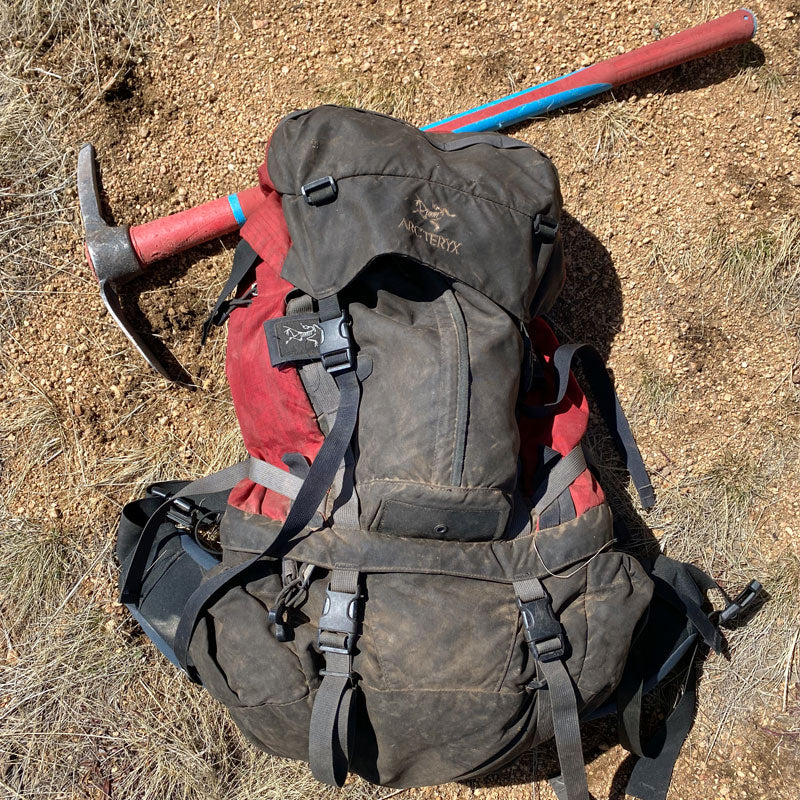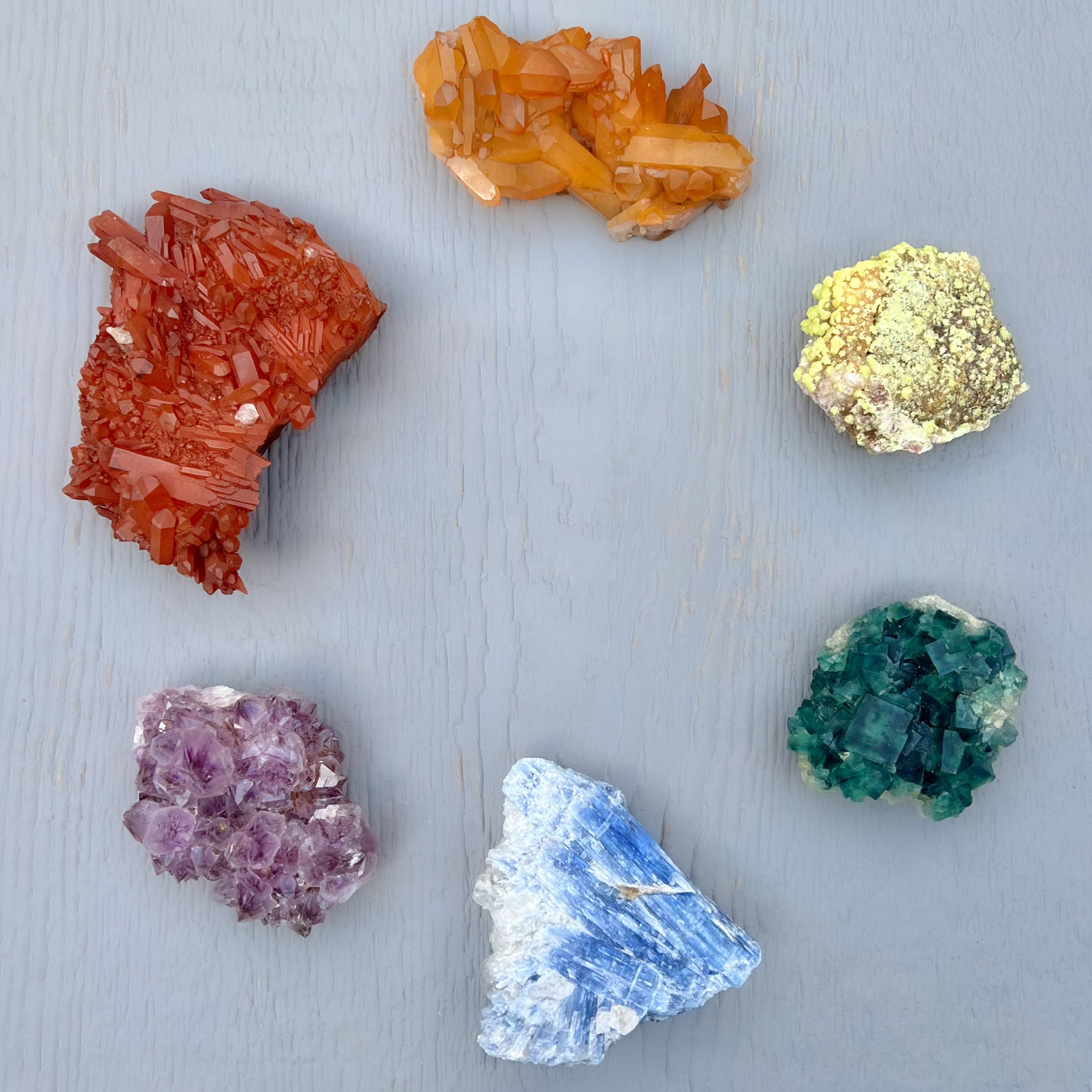Unveiling the Secrets of Cut and Polished Rocks and Fossils
Let's dive into the world of rock cutting and polishing, exploring why it's done, how it happens, and the purpose it serves.
Revealing Hidden Beauty in Rocks
The primary reason rocks undergo the cutting and polishing process is to reveal their hidden beauty. Many rocks in their natural state, may have dull or weathered exteriors that obscure the vibrant colors, intricate patterns, or crystals hiding within. Cutting away this outer layer to observe the newly exposed surface unlocks aspects of the rock or fossil that might otherwise remain unseen.
Think of a geode – a seemingly ordinary rock on the exterior, but when cracked open may reveal a dazzling crystal cavity filled with sparkling minerals.

Revealing Hidden Beauty in Fossils
The same principle goes for fossils, especially Ammonites. Many species of Ammonites have interesting exteriors that display intricate markings and patterns. However, when cut and polished, certain species of Ammonites reveal amazing internal chambers that have undergone a crystal replacement process. These display gorgeous Calcite crystals hiding within their original growth chambers. This type of detail can only be examined after the Ammonites have been sliced open and polished.

Or take these Fossilized Coral for example. The exterior provides a very detailed view into the structure of the original living coral prior to the fossilization process which took millions of years to form. Incredibly, when these rocks are cut open, they sometimes reveal amazing mineralization that occurred inside the hollow voids of the fossil. In this case, the Fossilized Coral was replaced by Silica in the form of Quartz / Chalcedony.

Posh When Polished
Some stones may not have crystals hiding inside, but their radiance can be further enhanced through the cutting and polishing process. High quality Labradorite may show a small amount of iridescence or Labradorescence in its raw and natural state. But give that stone a polish and watch the rainbows appear in all their glory! These types of patterns and colors can only be revealed when the stone is cut and polished.

Not All Rocks Are the Same
It's important to remember that when cracked open, not all rocks will reveal crystals hiding inside. Similarly, fossils that are sliced in half may not display amazing markings and internal structures inside. Whether or not interesting features will be found inside largely depends on the type of stone or fossil species, and the mineralization / preservation process it naturally underwent.
Slice of Life
Cutting and polishing stones allows us to appreciate the internal artistry of a wide range of minerals. Large pieces of Aragonite stone may not appear like much prior to cutting, but when slabbed and polished they reveal a beautiful Chatoyancy or cat's eye effect when tilted in the light.

Petrified Wood can often reveal a host of interesting colors and patterns when cut into slices and polished. The example below shows amazing copper-mineralization inside a piece of Petrified Wood which could never have been observed from the exterior of the stone. Only the cutting and polishing process would reveal the intricate details inside.

Thin Lines
Sometimes, simply polishing a surface isn't enough. For certain types of rocks, particularly those with interesting internal structures like agates, slicing them thinly and then polishing them offers a unique perspective.
By slicing stones like Agate quite thin, they become almost translucent, allowing light to pass through and illuminate the delicate patterns, color variations, and structures within.

The Journey from Rough to Radiant
The process of cutting and polishing rocks involves several key steps:
Selection and Preparation
The journey begins with selecting rocks that show potential for interesting internal features. First the stone or fossil is cleaned to remove any dirt and debris. It is then inspected for any interesting features that might be exposed on the exterior, or little windows or pockets giving us a tiny view of what may be hiding inside.
Cutting
This is where the transformation truly begins. Rocks are typically cut using specialized saws equipped with diamond-impregnated blades. Water is often used as a coolant and lubricant to prevent overheating of the blade and reduce dust. The size and shape of the cut will largely depend on the intended purpose or final product desired.
Grinding
After cutting, the rock surface may still be relatively rough to the touch. Grinding involves using a series of progressively finer abrasive materials (often silicon carbide or diamond grit) on rotating wheels or flat laps which are common pieces of lapidary equipment. This smooths out the saw marks and prepares the surface for final polishing.
Polishing
The final stage of the process will bring out the shine of the stone. This involves using very fine abrasives, often suspended in a liquid slurry, on soft materials like leather or felt. The microscopic scratches left behind by the grinding process are gradually eliminated, resulting in a smooth, reflective, high polished surface.

Why Do We Cut and Polish Stones?
The reasons behind cutting and polishing rocks are multifaceted.
Aesthetic Appreciation
Perhaps the most obvious reason we cut and polish stones is to create beautiful objects to look at. Polished rocks and gemstones are prized for their visual appeal and are used in everything from home decor to amazing jewelry. After all, it is Nature's Art!
Gemstone Industry / Jewelry
The cutting and polishing of gemstones is an ancient art that is still as relevant today as ever. Raw gemstones are transformed into faceted jewels that are highly valued for their color, clarity, brilliance and rarity.
Collection and Display
Many people (including us!) collect polished rocks and minerals for their beauty, rarity, or sheerly out of interest in our natural world. Displaying these specimens allows us to admire and share their unique characteristics. The same way you would display art or plants in your home.
Lapidary and Hobby
Many people find joy in the craft of lapidary, which is the art of cutting, shaping, and polishing stones. For many, it is a rewarding hobby that connects individuals with the natural world and helps them explore the inner beauty of stones.
Scientific Study
When stones and mineral specimens are cut very thin, they become invaluable tools for geologists and mineralogists. By examining these translucent slices called Thin Sections under a microscope, they can identify minerals, study crystal structures and textures, and unravel the history of geological processes. This helps us understand the Earth's formation and evolution.
Education and Outreach
Polished rock specimens are excellent educational tools. They are a great opportunity for children to get exposed to amazing natural treasures from a young age. I started my rock collection with a variety of tiny polished stones I bought at a rock shop when I was a kid. This was a low cost way for me to collect a wide variety of rocks and sample different stones without breaking my piggy bank!

A Glimpse into Earth's Treasures
Next time you encounter a beautifully cut and polished rock, take a moment to appreciate the journey it has undertaken. From a rough, unassuming piece of stone, it has been transformed to reveal the hidden beauty inside. Whether it's a dazzling gemstone, a banded agate slab, or a thin section under a microscope, each polished surface offers a unique window into the fascinating world of geology and the enduring beauty of the natural world!




